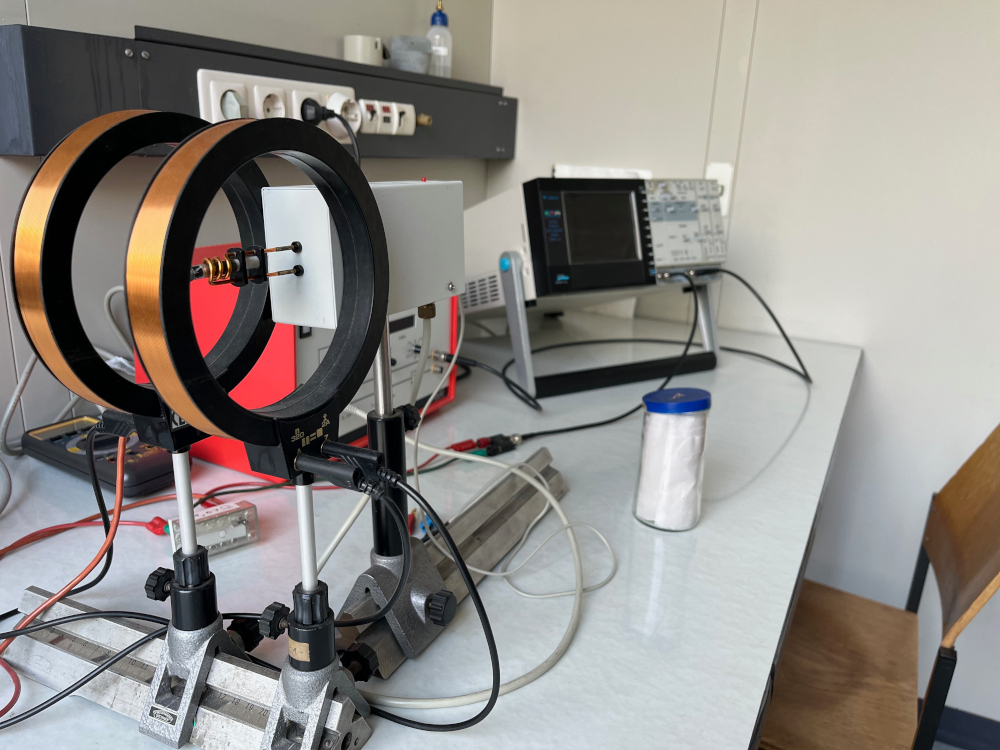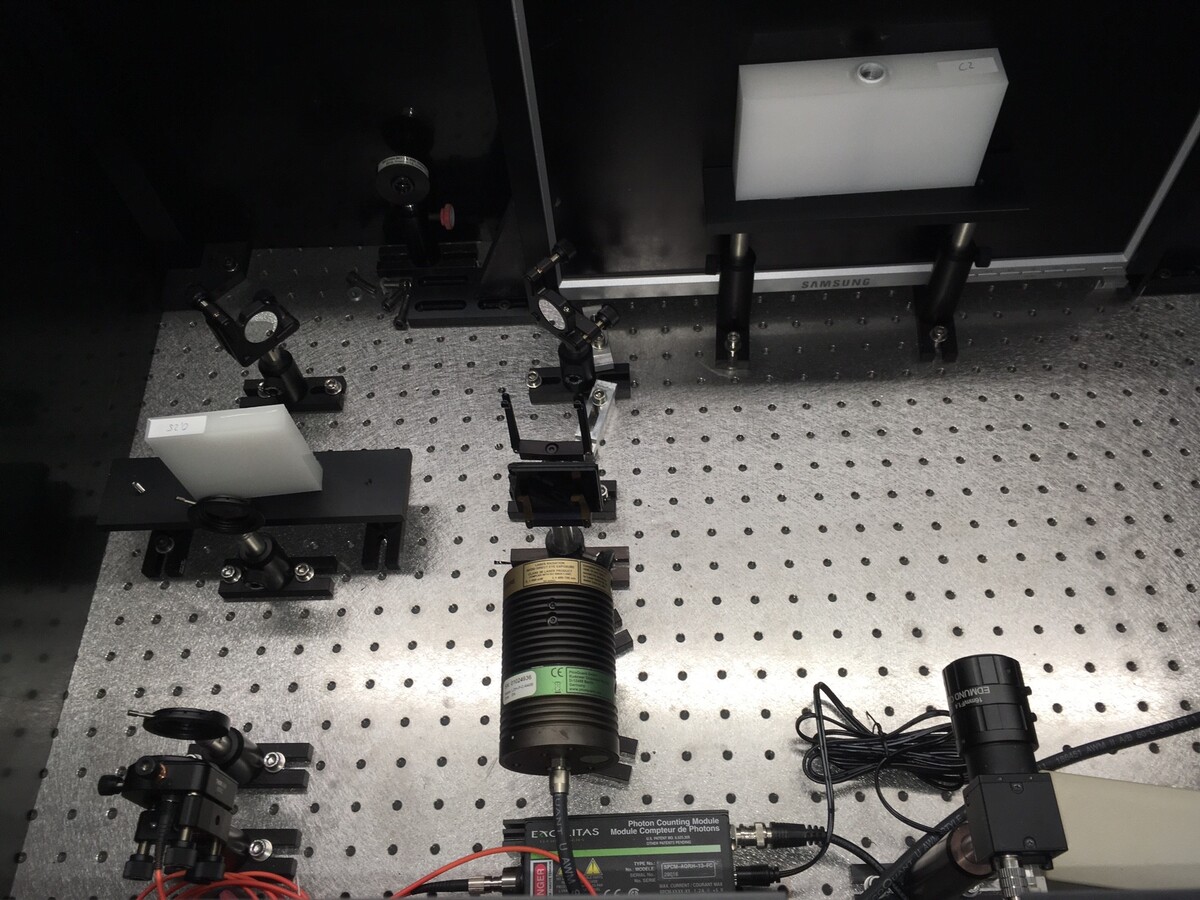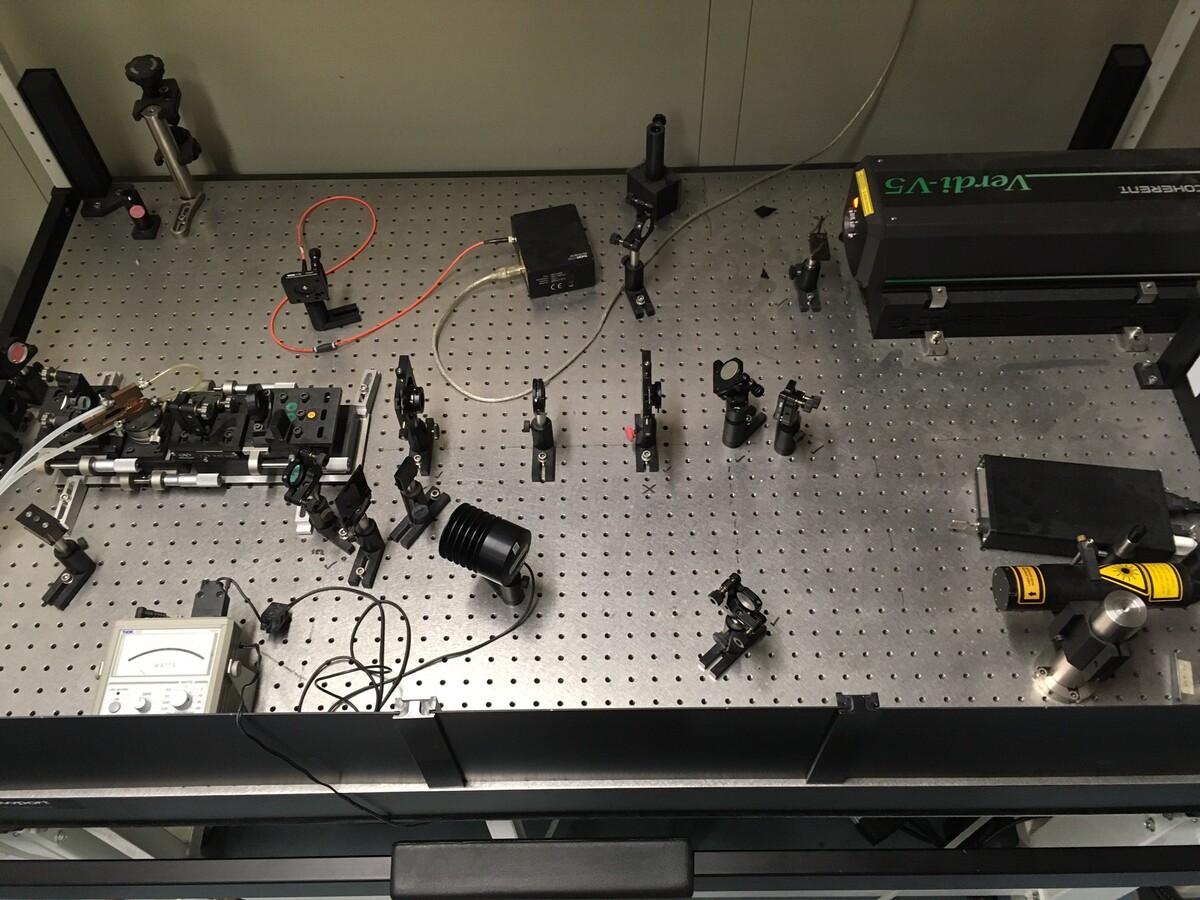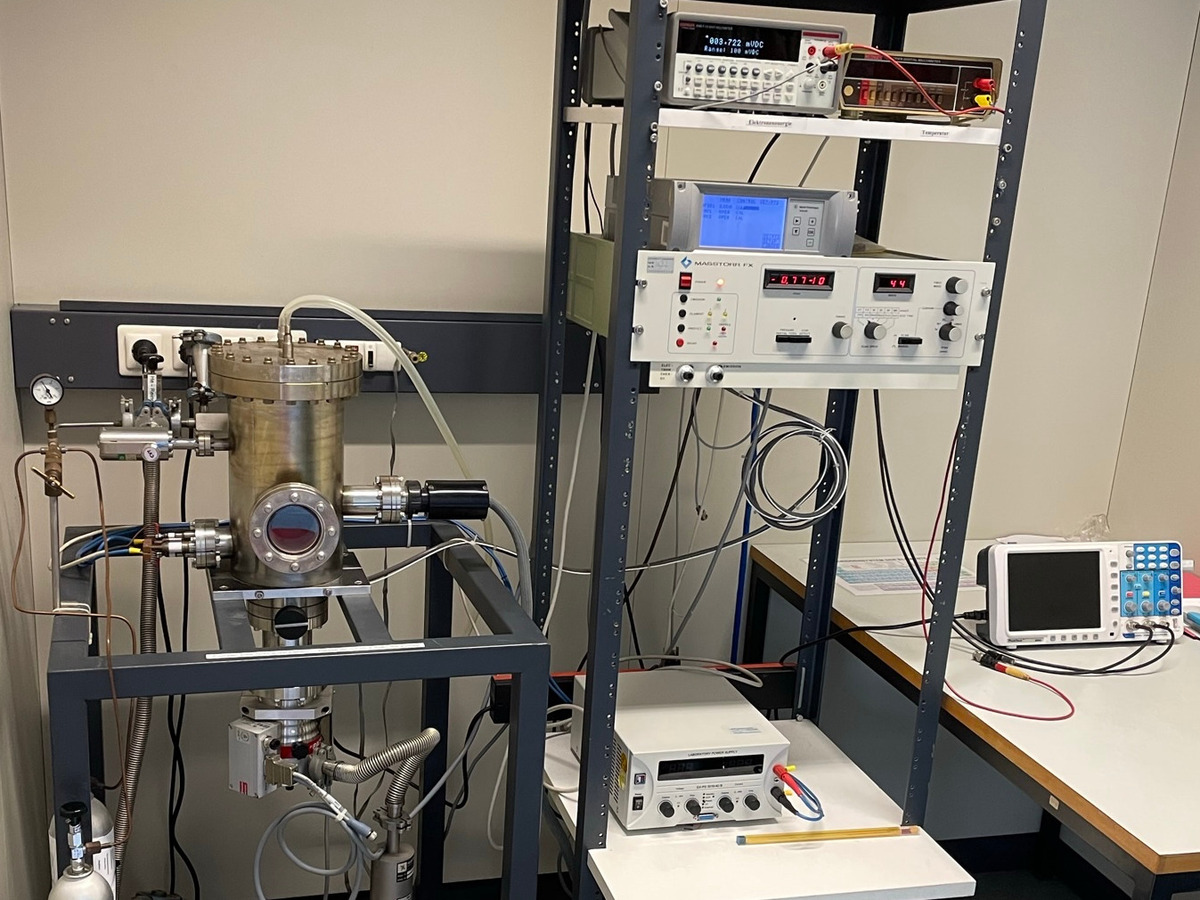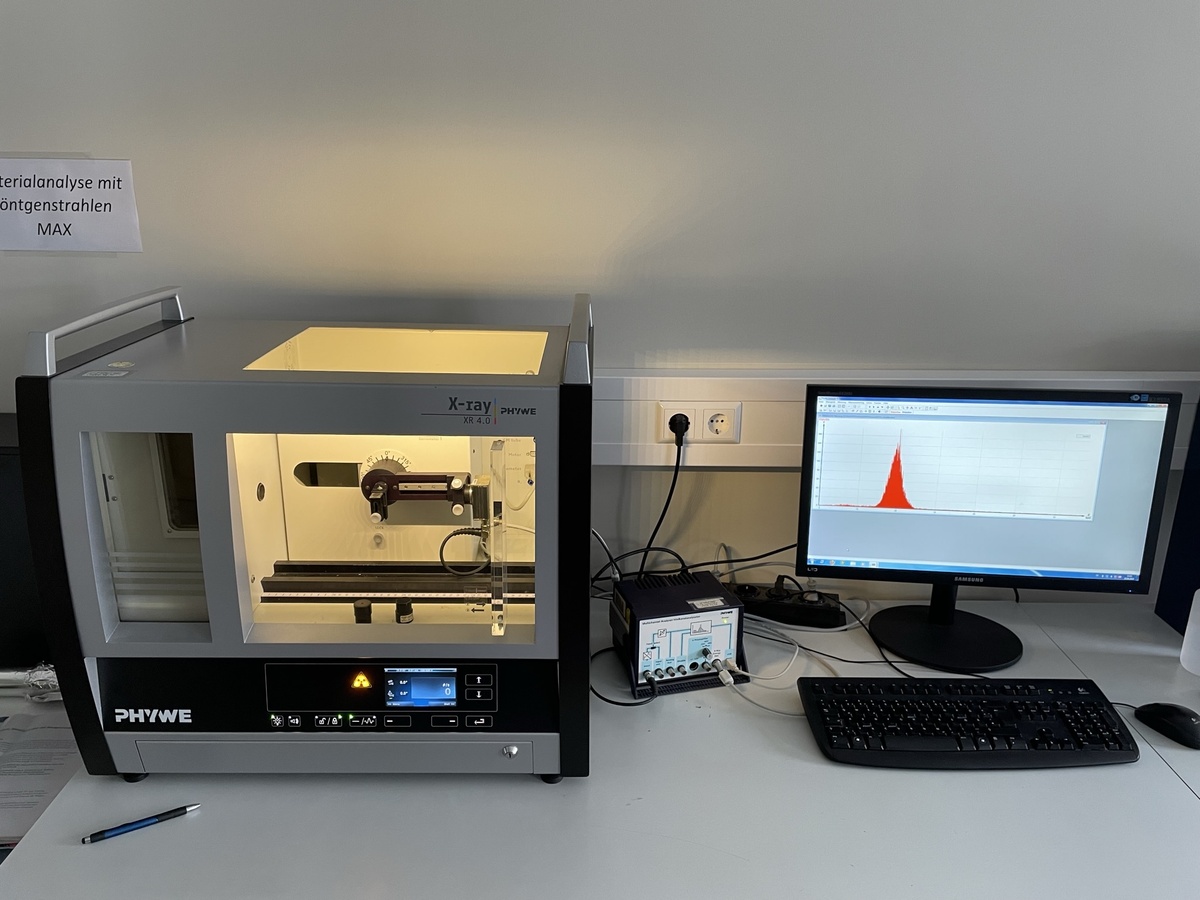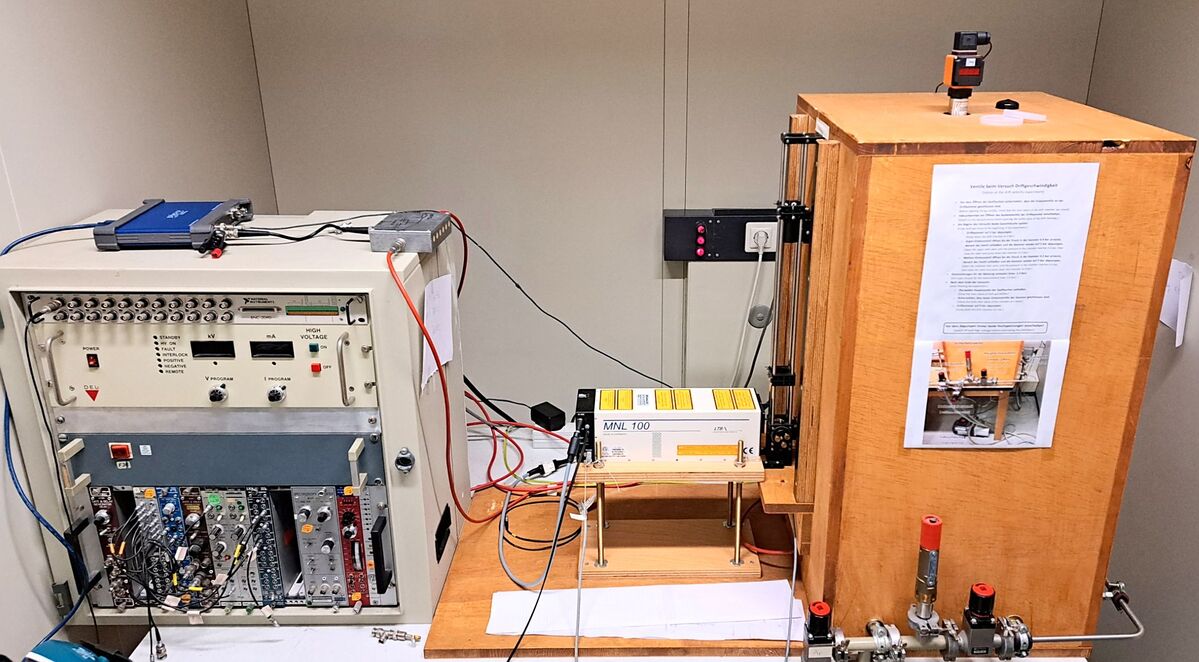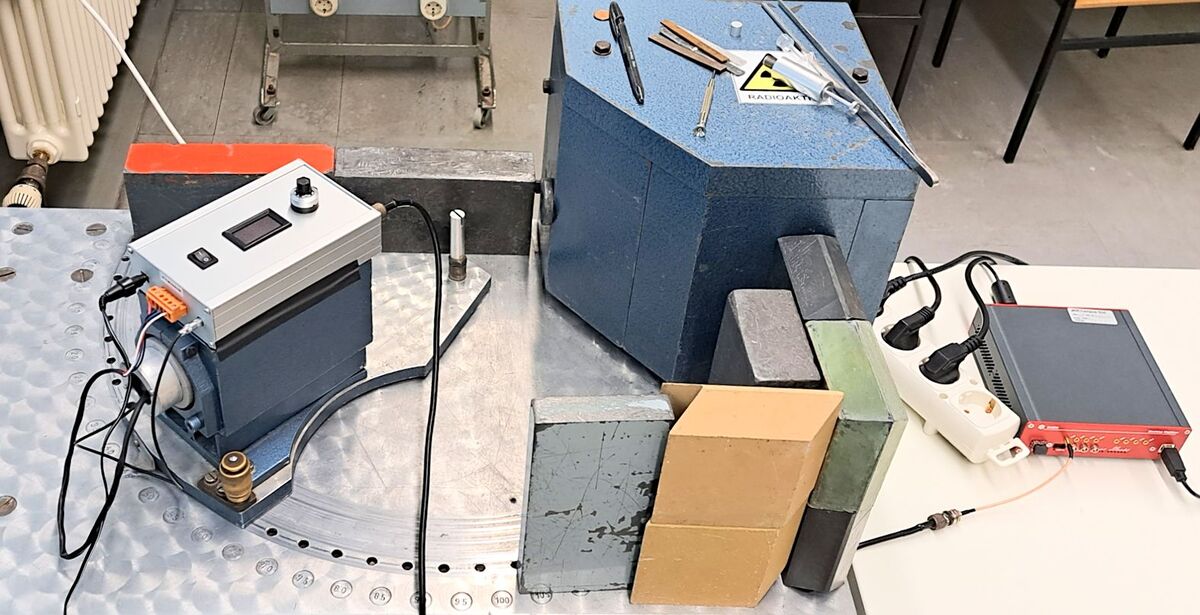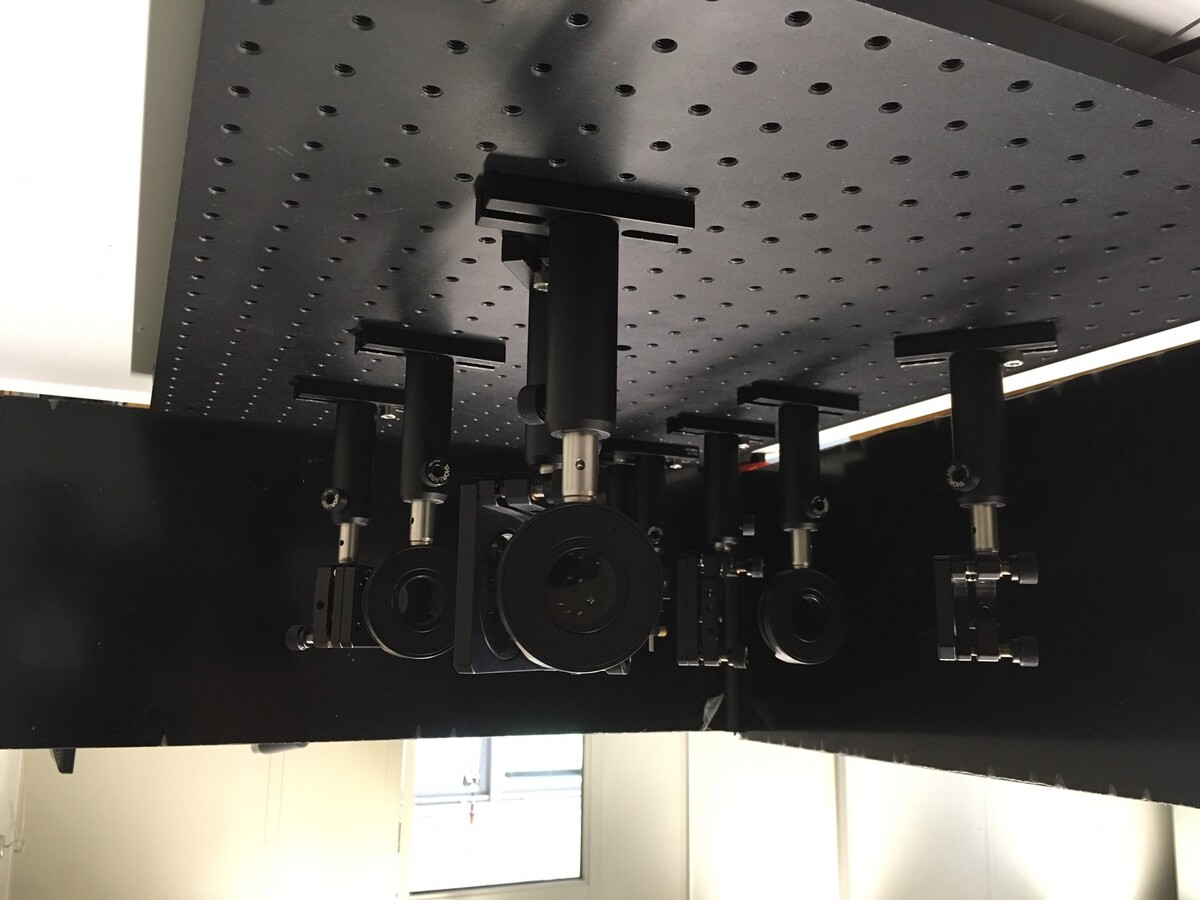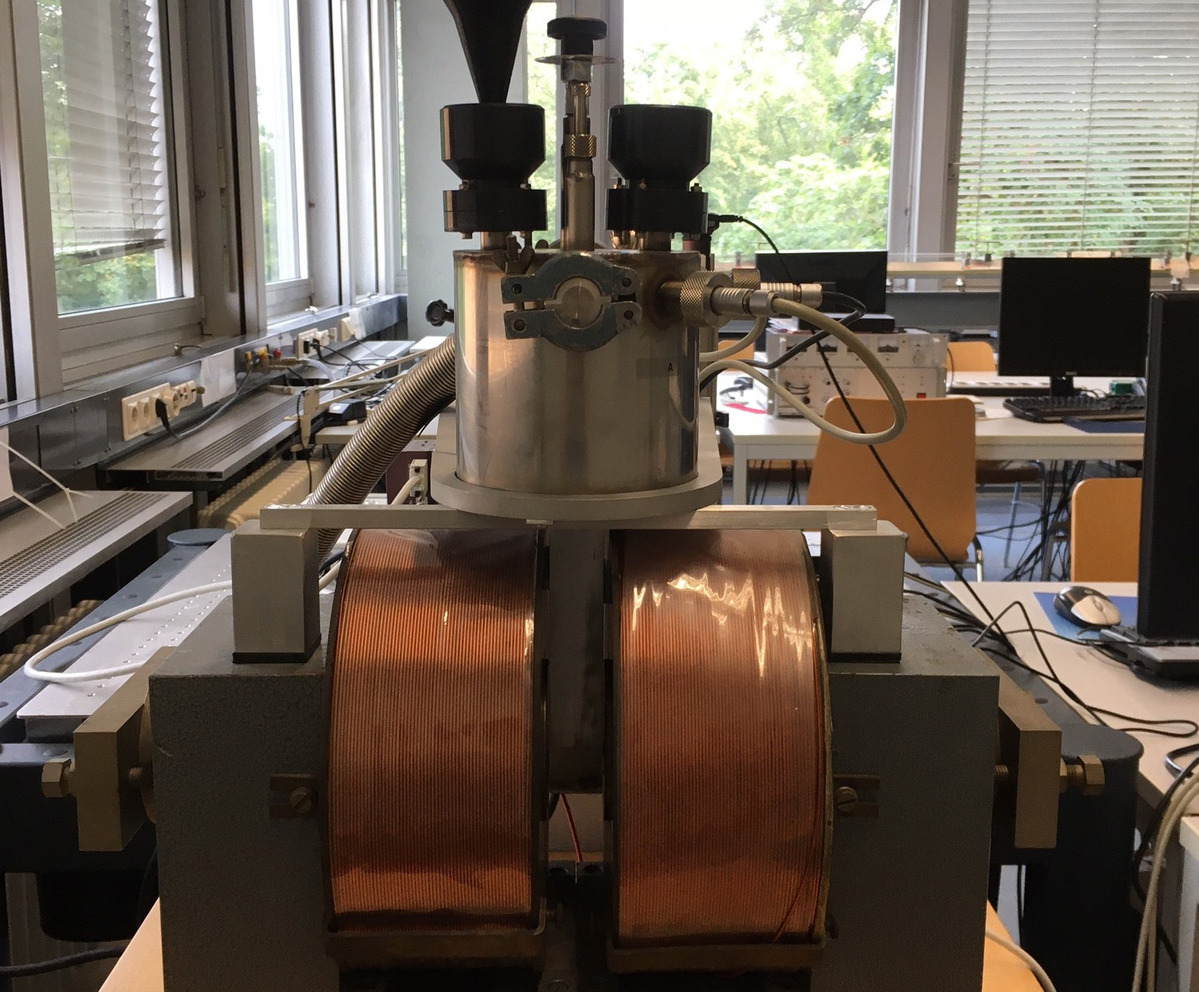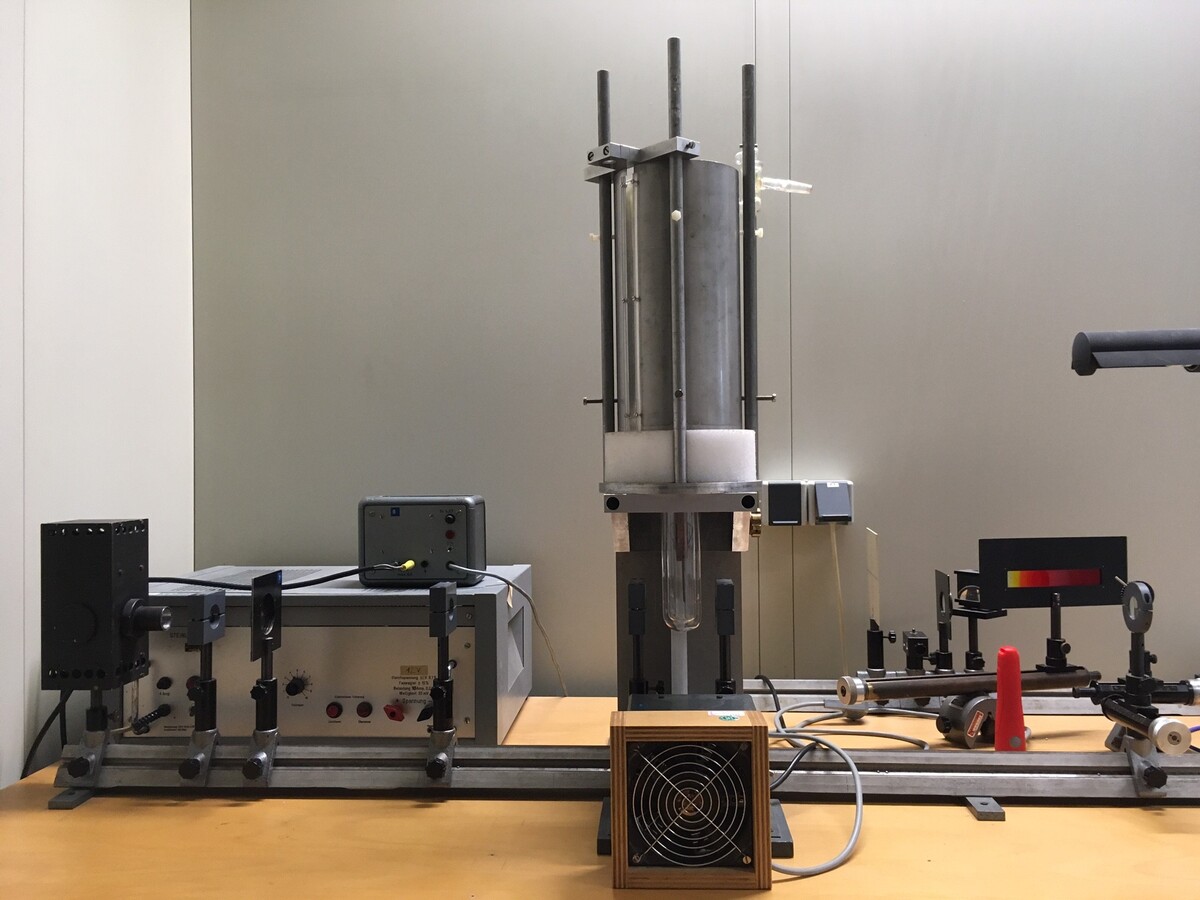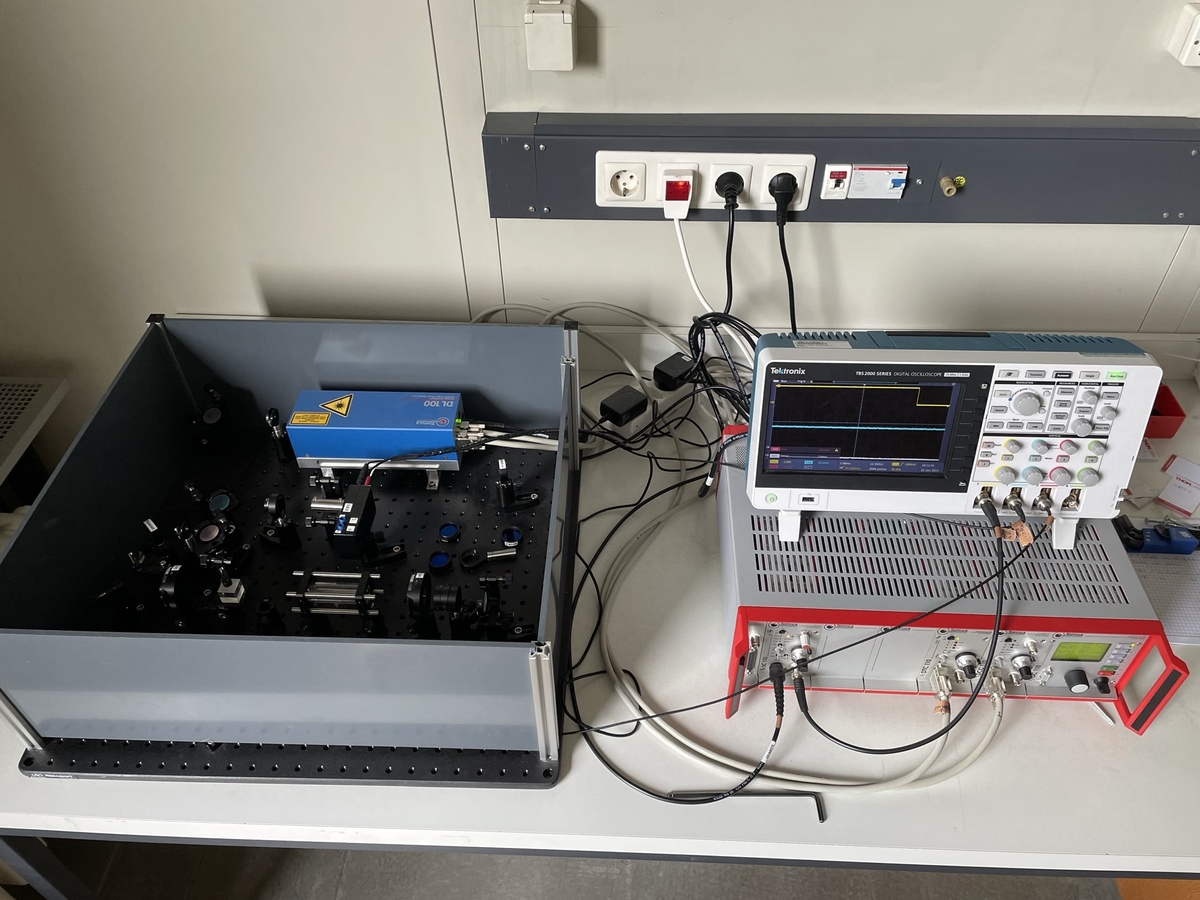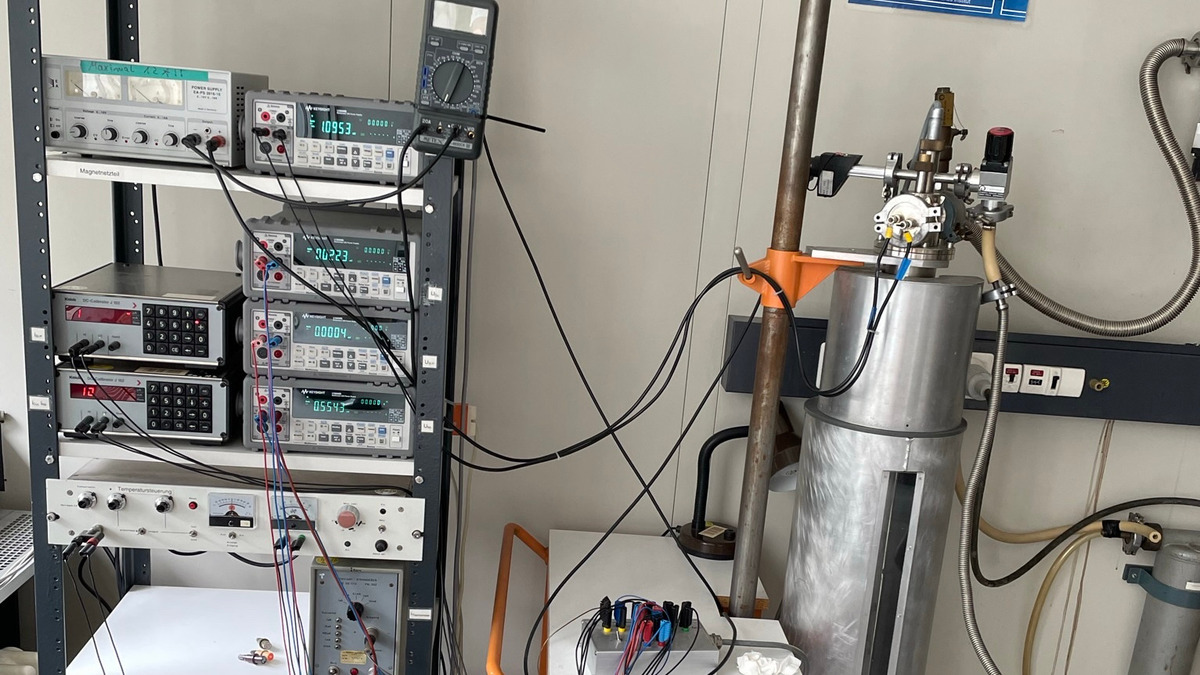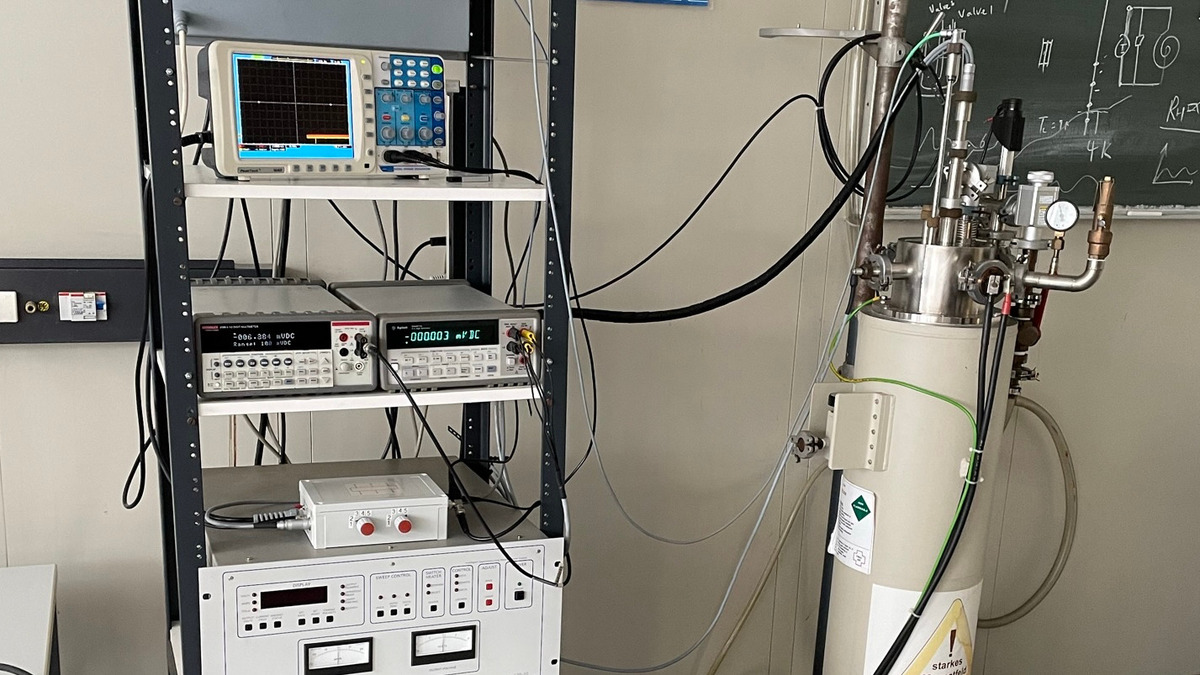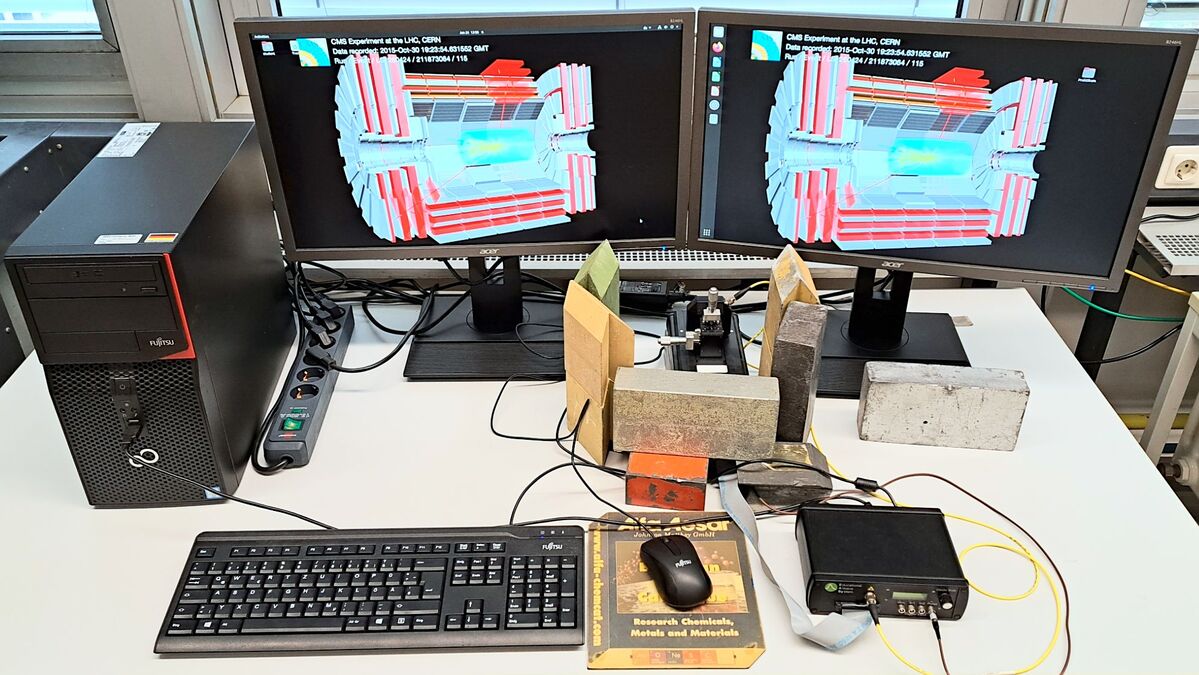The Labs of Modern Physics are organised topically into three areas, which are supervised by the three experimental institutes of the Faculty of Physics: Applied Physics (APH) , Institute of Physics (PHI) and Experimental Particle Physics (ETP). Of the 5 or 6 experiments to be carried out by a group of two students, one or two experiments are awarded from each area. Experiments with the same prefix (e.g. APH-1) are usually combined.
APH-1: Optical Cloaking
This experiment investigates an optical cloaking device that makes objects invisible in a light-scattering environment (such as fog or milk). The cloaking is based on the faster diffusion of light in the cloak compared to the surrounding environment, which causes the light to be deflected around the object.
APH-1: Lattice Vibrations
A chain of sliders coupled with springs on an air cushion path models longitudinal vibrations of the crystal lattice (phonons). From the natural frequencies, the dispersion relation of the monatomic and the diatomic chain can be determined.
APH-2: Quantum Optics
In this experiment, quantum properties of light are investigated. Single photons are generated, detection techniques are illustrated and basic quantum mechanical concepts such as the superposition of states are demonstrated.
APH-2: Atomic Force Microscope
An atomic force microscope is used to examine the surfaces of a self-assembled monolayer (SAM) of silane-alkanes patterned by micro-contact printing and a CD with respect to topography and friction contrast.
APH-3: Laser Resonator
In this experiment, a pre-assembled titanium:sapphire laser is adjusted and put into laser operation. Subsequently, characteristics and application areas of different laser types are worked out on the basis of the spectra. The experiment gives a good insight into the work in an optical laboratory.
APH-3: Optical Tweezers
In optical tweezers, a highly focused laser beam is used to hold and move microscopic dielectric objects. In the experiment, this principle is being investigated on plastic microparticles. In medicine, the method is used for artificial insemination, among other things.
PHI-1: Scanning Tunneling Microscope
The surfaces of highly oriented pyrolytic graphite (HOPG) and evaporated gold films are examined and characterized by a scanning tunnelling microscope at room temperature.
PHI-1: Mass Spectrometer
A quadrupole mass spectrometer is available in a high vacuum chamber. In addition to the measurement of mass spectra of the residual gas in the vacuum chamber, the ionization energy of argon as well as the decomposition enthalpy of calcium carbonate can be determined.
PHI-2: Nuclear Magnetic Resonance
The aim of this experiment is to determine the spin-spin relaxation by nuclear magnetic resonance (NMR) and to investigate the relationship between the spin-spin relaxation time T2, and the effective spin-spin relaxation time. The T2 time for water is measured using the spin-echo method, and the concept of the NMR imaging technique is explained with a simple experiment.
PHI-2: Bloch waves / Quantum Analogs
In this experiment, various sound wave experiments are carried out, which serve as analogous experiments for certain effects of quantum physics. First, a particle-in-a-box is simulated with the help of sound waves in a closed tube. In addition, the band model, a quantum-mechanical description of electronic energy states in an ideal single-crystalline solid, can also be acoustically modelled by a pipe provided with apertures. In particular, the behaviour of particles in a periodic lattice potential and the formation of these band structures are investigated. With the help of the setup, lattices with multi-atomic base and lattices with defects can also be observed.
PHI-3: Hyperfine Structure
The hyperfine line spectrum of thallium is recorded with a piezo-controlled Fabry-Perot interferometer. The hyperfine splitting of 205Tl can be determined from the interference patterns obtained with a CCD camera.
PHI-3: Material Analysis with X-rays (MAX)
Material analysis with X-rays is an important method in research, development and production for determining the composition of materials and products. In this experiment, you will work with a modern X-ray machine and learn about some important basics of material analysis with X-rays (energy resolution, qualitative and quantitative X-ray fluorescence analysis, etc.). The device is approved as a full protection device within the scope of the Radiation Protection Ordinance.
ETP-1: Drift Rate of Electrons in Gases
The diffusion of electrons in a gas resulting in the ionization of gas molecules/atoms by ionizing radiation is an important process in the detection of high-energy radiation, e.g. in a Geiger-Müller counter tube. In this experiment, the average drift velocity of electrons is measured as a function of gas, acceleration voltage and pressure and compared with theoretical expectation values.
ETP-1: Parity Violation in case of β-Decay
In this experiment, an important conservation rate is tested with the simplest means, the parity in the radioactive beta decay (weak interaction). Quanta of polarized bremsstrahlung (braking radiation) are counted via the compton scattering of magnetized iron in a NaJ scintillation detector. If the parity in beta decay is violated, there are different counting rates depending on the magnetization direction of the iron.
ETP-2: The Lifetime of Positronium
In this experiment, the average lifetime of a positron (anti-particle of the electron) is measured in plexiglass. Positrons annihilate with electrons in two gamma quanta detected with scintillation detectors. In the solid, they usually form an atomic-like state with electrons, the positronium, the life of which depends on the direction of the two particles (Ortho and Parapositronium).
ETP-2: The Compton Effect
This experiment investigates the quasi-elastic scattering of gamma quanta of electrons, the compton scattering. An aluminium cylinder and a scintillation detector, which can be moved around the scatterer at different angles, serves as a scattering target. The energy of the scattered gamma quanta and the counting rate are absorbed as a function of scattering angle and compared with theoretical predictions.
ETP-3: Measuring the Angle Correlation of Gamma Radiation
In gamma decays in which two correlated gamma-ray quanta are emitted in a cascade, the angle between the two gamma measures is no longer isotropically distributed. Two scintillation detectors can measure the count rate of correlated gammas from a 60Co source at different angles and determine the anisotropy of the distribution.
ETP-3: Neutron Diffusion
Fast neutrons from an AmBe source in a water tank are slowed down (thermalized) in the water and detected with a BF3 counter tube at different distances. In addition, a Cd sphere can be used to absorb thermal neutrons around the source. From the two measurements, the relaxation length for fast neutrons and the diffusion length for thermal neutrons in water will be determined.

